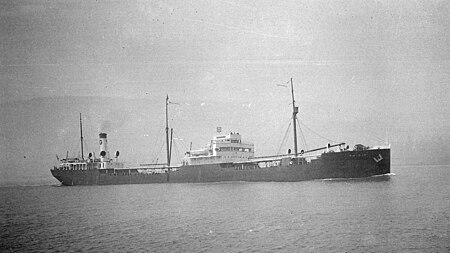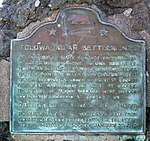SS Emidio
1921 shipsCalifornia Historical LandmarksCalifornia in World War IIMaritime history of CaliforniaMaritime incidents in December 1941 ... and 6 more
Ships of ExxonMobilShips sunk by Japanese submarinesShipwrecks of the California coastTankers of the United StatesWorld War II shipwrecks in the Pacific OceanWorld War II tankers of the United States

Hammac was a steam tank ship built in 1920–1921 by Bethlehem Shipbuilding Corporation of Alameda for the United States Shipping Board as part of the wartime shipbuilding program of the Emergency Fleet Corporation (EFC) to restore the nation's Merchant Marine. Early in 1923 the vessel together with two other tankers was sold to General Petroleum Corporation and renamed Emidio. The tanker spent the vast majority of her career carrying oil along the West Coast of the United States as well as between West and East coast. In December 1941 she was shelled and damaged by the Japanese submarine I-17 and eventually wrecked with a loss of five crewmen.
Excerpt from the Wikipedia article SS Emidio (License: CC BY-SA 3.0, Authors, Images).SS Emidio
Stamps Way, Crescent City
Geographical coordinates (GPS) Address Nearby Places Show on map
Geographical coordinates (GPS)
| Latitude | Longitude |
|---|---|
| N 41.750544444444 ° | E -124.19665277778 ° |
Address
Stamps Way
75531 Crescent City
California, United States
Open on Google Maps





